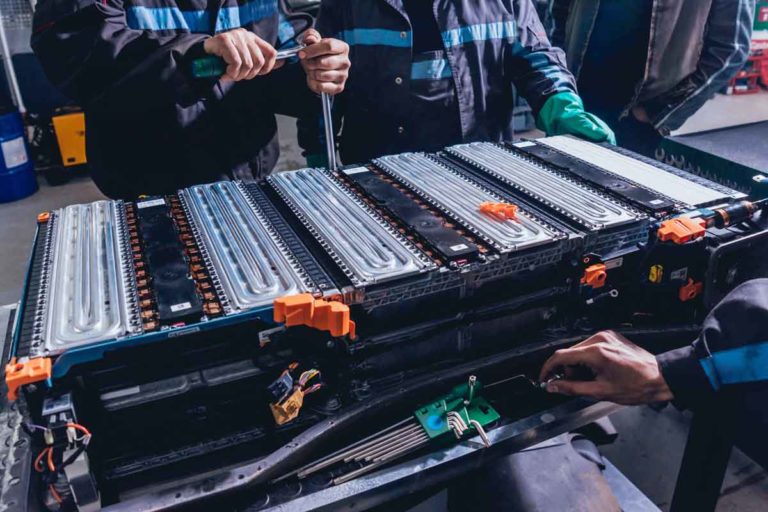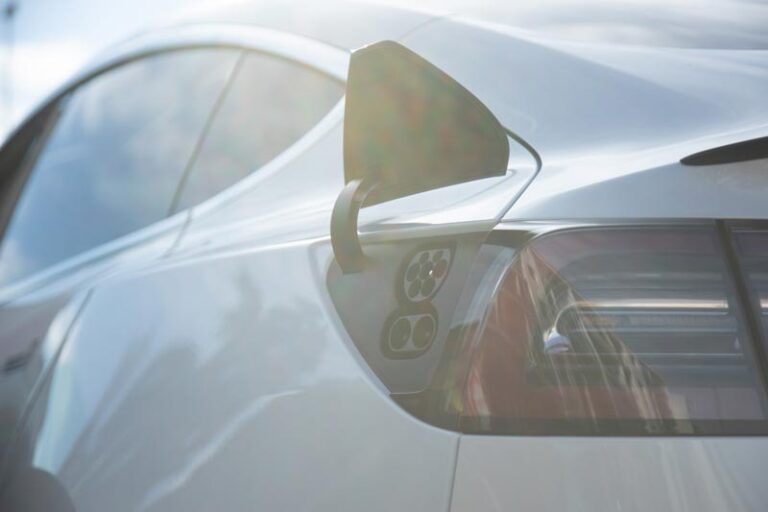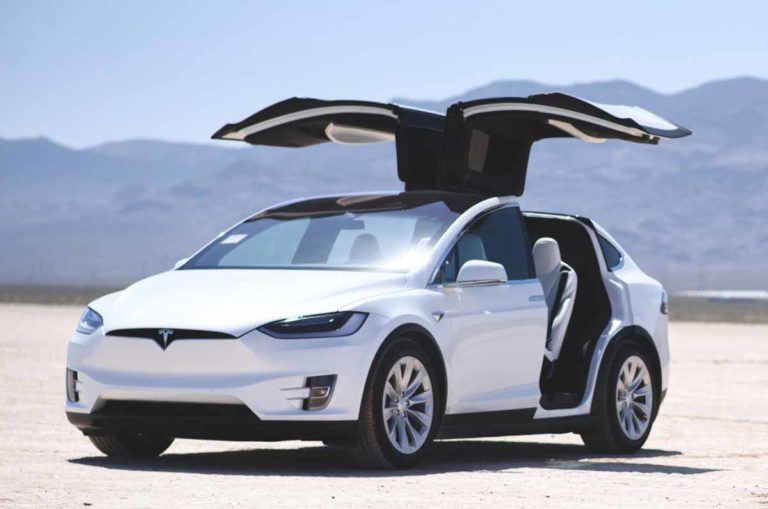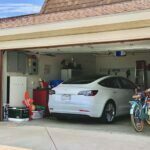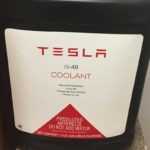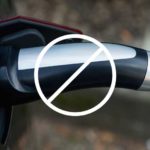If you’re considering buying a Tesla Model 3 and want to anticipate any potential issues you may run into, you have probably heard of phantom drain. This can be especially concerning to people who’ve never owned an electric vehicle before and haven’t had to deal with this issue. So when does Tesla Model 3 Phantom Drain occur?
Phantom drain happens when a Tesla Model 3 loses energy while turned off. Contrary to conventional gasoline vehicles, an electric vehicle will use a small amount of standby power when turned off. To prevent phantom drain in your Model 3, disable Sentry Mode, climate control, and third-party apps.
If you’re concerned about phantom drain being an issue, you can rest assured that most Tesla owners don’t even notice any energy drainage at all. Even if phantom drain becomes a problem, there are many ways to minimize its impact. Keep reading to learn more about phantom drain and how to avoid it.
What Is Phantom Drain?
Phantom drain—also known as vampire drain—is when your Tesla loses mileage while turned off or idle. Some energy loss is expected because your electric vehicle never fully shuts off, but losing more than one mile per hour of idle time is excessive. This is what’s known as phantom drain.
In other words, phantom drain represents the amount of charge an electric vehicle loses when it is not being driven or operated by a person.
As an electric vehicle, the Tesla Model 3s are susceptible to standby power. This allows electrical appliances, machines, and devices to periodically perform small tasks even when powered off. This is why you can expect your Model 3 to lose a little bit of power whenever it’s idle and not plugged in.
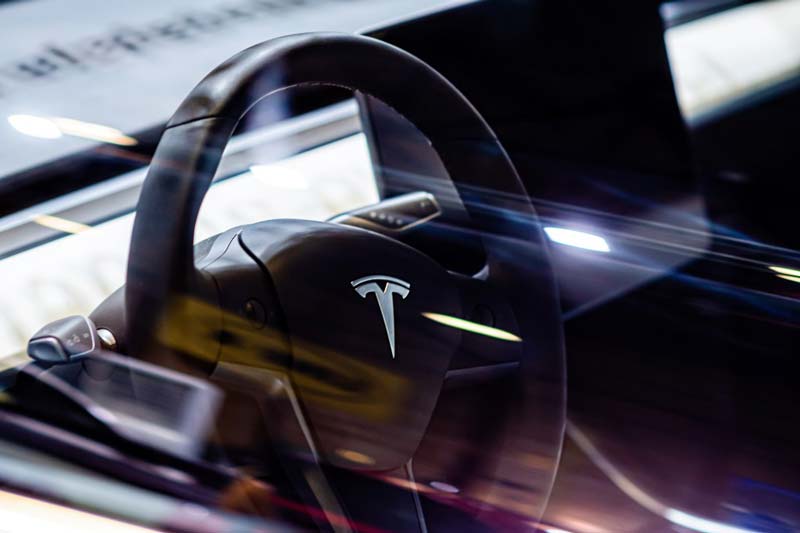
Photo: @ako via Twenty20
How Tesla Defines Phantom Drain
Though Tesla doesn’t refer to phantom drain as such, they do acknowledge that some battery drain is expected when idle and unplugged.
The Tesla Model 3 owner’s manual states, ”When left idle and unplugged, your vehicle periodically uses energy from the battery for system tests and recharging the 12V battery when necessary.”
So, rest assured that your Tesla Model 3 isn’t broken or faulty if it loses some battery when idle. A small amount of power loss (and thus range loss) is normal and expected when the car is left unplugged.
Phantom drain generally refers to excessive energy loss beyond what can reasonably be expected from standby power. Your Tesla Model 3 should lose no more than 10 miles (16.09 km) of range per day of idleness.
If your Tesla is losing a mile of range or more per hour, you are experiencing phantom drain.
What Causes Phantom Drain?
Many factors can cause phantom drain. This includes built-in features of your Tesla as well as third-party apps that may be sucking your car’s battery dry.
Does Tesla Sentry Mode Drain Battery?
Sentry Mode is one of the biggest reasons why Tesla Model 3’s experience battery drain. It’s a feature that allows your Tesla to keep the cameras on while idle and start recording if it notices anything suspicious.
This feature can be very helpful when you park in unfamiliar or unsafe locations, making your Tesla prone to theft or vandalism. According to the Federal Bureau of Investigation (FBI), there were 721,885 car robberies in the United States in 2019. Sentry Mode could help prevent theft or help if you fall victim to a robbery.
Though the potential safety benefits are significant, Sentry Mode prevents your Tesla from fully going to sleep. You should really consider when Sentry Mode is necessary and disable it when your car is parked safely to prevent phantom drain.
How Much Battery Does Sentry Mode Use in A Tesla?
When you enable Sentry Mode, your Tesla starts channeling its inner security guard and uses some battery power to keep a watchful eye on things. Based on tests, it’s been observed that while Sentry Mode is active, your vehicle will consume around 250 to 300 watts of power. To put that into perspective, it’s like losing about 1 mile of range for every hour that Sentry Mode is rocking and rolling.
Now, let’s talk about the impact over a full day. Sentry Mode can chomp on about 7.2 kWh of energy, which translates to roughly 24 miles of range. So, depending on your Tesla model and battery size, this could be around 7% to 14% of your battery capacity. It’s good to keep these numbers in mind to ensure you don’t drain your battery unexpectedly.
Since Sentry Mode is quite the energy guzzler, it’s best to use it judiciously. It’s not meant for those long-term parking situations where your Tesla will be sitting idle for extended periods. Trust me, you don’t want to come back to a drained battery!
Luckily, Tesla has got your back. They offer options to automatically enable Sentry Mode at specific locations, giving you that extra peace of mind without worrying about excessive battery drain. And hey, one more thing to note: Sentry Mode is automatically disabled when your vehicle’s battery falls to 20%, so you won’t be caught off guard.
Battery Climate Control
Another important reason why your Tesla Model 3’s battery will drain in its sleep is climate control. Electric vehicle batteries need to be kept within certain temperatures for optimal performance, which is why your Model 3 will use some energy even when idle.
This is why Tesla recommends that you plug in your Model 3 every time it’s idle, even when parked in your garage. Without this climate control feature, your electric vehicle’s battery would not last as long or perform as well. In essence, it is an energy saving feature.
Keep Climate On Setting
This is another feature that can contribute significantly to phantom drain. Keeping Climate On does exactly what the feature’s name purports to do—it keeps the AC or heating on to keep your car at a comfortable temperature while you run errands or stop for a quick bite.
While this feature is great for a hot sunny day or during a freezing northeaster, you should be cautious of it if you’re concerned about power drain. Keeping the AC or heating on while you’re away will consume a significant amount of power and drain levels of your battery.
It’s worth noting that Dog Mode and Cat Mode essentially do the same thing as Keep Climate On. The difference is that you cannot keep dogs or cats inside your Tesla without turning the respective pet mode on.
If you’re concerned about phantom drain during cat or dog mode, you should minimize the time you leave your pets alone in your car.
Pro Tip: Is there a workaround for Tesla Dog Mode not working under 20% charge?
You can put the car in neutral in your safety menu and manually apply the parking brake. Then you can go and do the things you need to do. Just remember to manually lock the car because it will not automatically do so. If you also want to let passersby know that your Dog is safe and in Dog Mode, you can do so by opening the drawing app and writing the message there.
Third-Party Apps can Cause Vampire Drain
Third-party apps can drain your Tesla’s battery by constantly keeping the vehicle awake or waking it up. Just like humans, Teslas need their beauty sleep to conserve energy. A restless Tesla will lose a lot of energy as it constantly powers on when pinged by any one of your apps.
Most third-party apps realize this and now offer a sleep feature. If you’re using any third-party apps, review the settings of each of them to ensure that it isn’t interrupting your Tesla’s deep sleep.
Does Tesla Battery Drain While Parked?
Tesla—any electric vehicle—will lose battery while parked. This is because of standby power, a feature of virtually every electronic device that enables it to perform essential features while idle.
If you notice that your Tesla Model 3 is draining a little bit of battery while parked, don’t fret. This is normal and expected of the healthiest Tesla batteries.
However, you should start looking into possible causes of excessive drain if it goes beyond one mile of range lost per hour.
Tesla Model 3 Phantom Drain per Day
You can expect an average daily drain of 1% of battery capacity, give or take. Generally, you shouldn’t worry if your Model 3 is draining less than 3% per day as this isn’t a significant mile range reduction.
According to Tesla’s Model 3 Owner’s Manual, “The Battery can discharge at a rate of approximately 1% per day, though the discharge rate may vary depending on environmental factors (such as cold weather), vehicle configuration, and your selected settings on the touchscreen.”
This is consistent with our findings of the different factors that impact your phantom drain: the outside temperature and settings like Sentry Mode and Keep Climate On.
These factors make the 1% estimate from Tesla just that: an estimate. If you’re losing 2% or even 3%, you shouldn’t worry too much. You could even be losing close to 0% per day, and that would be fine too.
Most owners report a daily loss of about 1% per day, but some experience significantly less. A Reddit user even reported losing just over 20% of battery power over a total of 80 days of idle time. That’s an average of less than 2% drain per week.
4 Tips To Reduce Phantom Drain in Model 3 for Owners
Don’t worry if you’re experiencing phantom drain beyond 3% per day. Reducing the drain to acceptable levels is almost always a very easy fix. Try some of the following measures that explain how to stop Tesla phantom drain to reduce your energy loss.
1. Disable Sentry Mode When Safe
Sentry Mode has been identified as the main culprit behind the phantom drain. While this feature could save your Model 3 from vandalism or theft, you should be selective with when and where you use it.
If you’re leaving your Model 3 in a safe place with cameras, like premium airport parking or in your friend’s garage, you should disable Sentry Mode to prevent battery drain.
2. Never Enable Climate Control
The only exception, of course, is when you leave your pets or other people inside the car. Other than that, you should turn off the climate control in your vehicle to prevent unnecessary battery loss.
Leaving the climate control on while you run your errands is akin to leaving your car on in the parking lot. Make sure to never use this feature if you’re concerned about phantom drain.
3. Review Third-Party Apps
Third-party apps can be energy vampires. They can prevent your car from falling asleep by constantly pinging your Model 3 for information throughout the day.
Review your third-party apps’ settings to see if they have any features for preventing phantom drain. Many have developed solutions to prevent the app from waking up your Model 3 if it’s sleeping.
Otherwise, try temporarily disabling all third-party apps to see if your battery drain improves. If it does, try reintroducing your apps one by one to see if you find one that’s significantly energy-intensive.
4. Disable Smart Summon Standby Mode
You should disable the Smart Summon Standby Mode unless you plan on using it very frequently. The thing about Standby Mode is that it leaves your car on Standby, preventing it from fully going to sleep as it waits for you to summon it.
To disable Standby Mode, simply:
- Go to Autopilot.
- Tap on the Standby Mode button.
- Toggle ‘OFF’ to disable.
Once you’ve disabled Standby Mode, your car will be able to sleep restfully every time you leave it idle. If you still want to summon it, you can do so from the app. You’ll just have to wait a few seconds for the car to wake up before using Smart Summon.
If you’d like to learn more about preventing phantom drain, you should watch the following YouTube video with a few more details on preventing phantom drain:
Does TezLab Cause Phantom Drain?
TezLab doesn’t cause added phantom drain on Model 3 Teslas, thanks to its Deep Sleep Assist mode. This feature prevents TezLab from waking your car when it’s in a deep sleep, enabling it to conserve battery power.
However, when using a third-party app, you should always monitor how it impacts your car’s sleep. Make sure that you review your app’s settings to ensure that the best energy-conservation features (like TezLab’s Deep Sleep Assist) are enabled and working.
Phantom Drain Model 3 Comparison Chart
| Tesla Model | Battery | Battery Capacity | Expected Daily Phantom Drain |
| Model S | 407 V lithium-ion | 100 kWh | 5.1 mi (8.21 km) per day |
| Model 3 | 350 V lithium-ion | 50-82 kWh | 9.2 mi (14.81 km) per day |
| Model X | 350 V lithium-ion | 100 kWh | 6.1 mi (9.82 km) per day |
| Model Y | 350 V lithium-ion | 75 kWh | 1% per day |
The expected daily phantom drain figures above come from data analyzed by TezLab, although Tesla’s owner’s manuals state that about 1% drain is expected of all models. There’s still insufficient independent data to analyze Model Y’s performance, so Tesla’s official estimate was used instead.
The data show that Model S is the best at preventing phantom drain while Model 3 is the worst at maintaining battery charge when idle.
However, this doesn’t mean that you should avoid buying a Model 3 just because of phantom drain. Teslas are notorious for being the only cars that get better after you roll them off the lot, in part due to Tesla’s software upgrades.
This means that phantom drain has become a less serious problem across the board, thanks to new software updates from Tesla. Watch the following YouTube videos from Teslanomics to learn more about how Tesla is continuously working to minimize phantom drain:
New 4680 Tesla Battery and Phantom Drain
Tesla’s highly anticipated 4680 battery is expected to significantly improve energy performance while also reducing the price of a new Tesla. Expected to begin production in early 2022, these batteries promise to extend the range by at least 16% while storing up to five times as much energy.
We don’t yet know how the new batteries will impact phantom drain—if at all—as we know it’s generally caused by software settings and third-party apps instead of poor battery performance.
However, we can expect phantom drain to be less of an issue on electric cars with a more powerful battery with more storage capacity.
Watch the following YouTube video to learn more about Tesla’s upcoming 4680 battery:
How Bad Is Phantom Drain in Teslas Compared to Other EVs?
All-electric vehicles suffer from phantom drain to a certain degree—not just Teslas. Constant software updates could make a Tesla fare better in terms of phantom drain compared to other EVs, while an abundance of third-party apps could hinder a Tesla’s performance.
One of the greatest benefits of owning a Tesla is that software updates are constantly pushed onto all vehicles. Tesla Motors is fully aware of phantom drain and is constantly improving its software to reduce this issue.
This level of support and continuous improvement is not something that you can expect from any manufacturer. When you own a Tesla, you can expect it to get better as it gets older, which is highly unusual for cars.
On the other hand, Tesla owners can be overzealous in their use of third-party apps. Many apps like TezLab, TeslaFi, SentryView, etc., can interrupt your car’s sleep and thus increase the amount of battery drain.
So, you may experience more phantom drain on a Tesla if you use several third-party apps to enhance your Tesla experience. Otherwise, you may expect a phantom drain comparable to or even better than other EVs in the market.
What is Vampire Drain in a Tesla?
Phantom drain is also sometimes called vampire drain. Vampire Drain in a Tesla refers to the small amount of energy that the car consumes while it’s parked and not in use. It’s like a sneaky vampire that slowly drains your battery over time, hence the name.
So even when your Tesla is just sitting there, minding its own business, it’s still using up a tiny bit of energy. However, in terms of vampire drain Tesla has many ways to help you keep it to a minimum.
Does Closing the Tesla App Reduce Phantom Drain?
Closing the Tesla app can indeed help reduce phantom drain, but the impact might not be as significant as you think.
You see, when you open the Tesla app, it establishes a connection with your car, allowing you to access and control various features remotely. This connection does require a small amount of energy to maintain.
So, if you close the app completely, it will sever that connection and potentially reduce the energy drain associated with it.
However, it’s important to note that the energy consumed by the app connection itself is usually quite minimal. Tesla has actually designed their app to be quite efficient in terms of energy usage.
So, while closing the app may have a slight impact on reducing phantom drain, it’s not likely to be a game-changer in terms of saving significant amounts of energy.
Check out these 20 great gift ideas for yourself or a Tesla fanboy.
Contact Us if you have any questions or queries.


